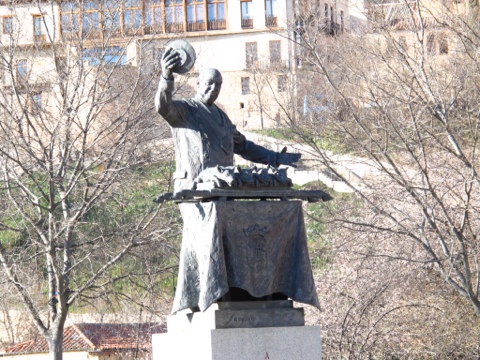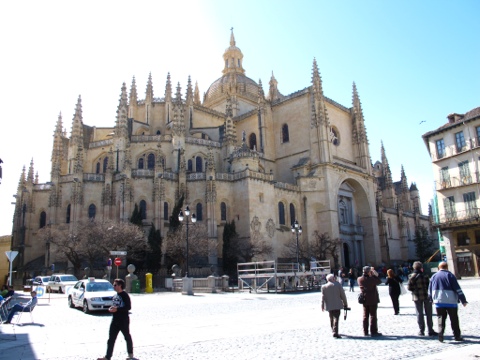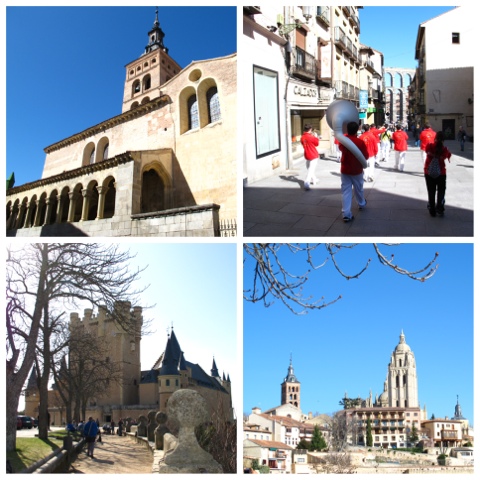When I think of Segovia, I would always have this fleeting image of a cochinillo in all its shining crispness. I could even almost hear the crackling sound way before that crunchy skin touches my lips. Sure, I’m a glutton without remorse. But let me explain.
Back in 2002, I set out on a tour of Spain armed with a long list of must-visit destinations and an equally long list of errr……must-try eats. Among them is the cochinillo at the Meson de Candido. Unfortunately, we landed in Segovia during Lent. On Good Friday at that. Meatless Friday. You don’t know how I’ve always dreamed of that cochinillo all these last 10 years!
Sans liver sauce. Sans all those herbs like our Cebu lechon. But it sure tastes gooooood. Ten years of frustration completely wiped out with the first bite! (I’m shameless when it comes to food). So glad we started our tour of Segovia with a “proper lunch”. By the time we were ready to walk around, we were hopping with energy.
The 2,000 year old Roman aqueduct is Segovia’s claim to fame. Well, besides the cochinillo of course. Even the Segovians have no pretensions about this and even built a statue to honor Señor Candido. These days, the restaurant is run by Candido’s nephew. Sobrino de Candido. Much like Madrid’s CASA Botin is now called Sobrino de Botin. Which makes me wonder……what happened to the hijos, or hijas?
Outside of the cochinillo and ancient aqueduct, Segovia has so much more to offer. Half a day visit doesn’t do it justice. And do get a local guide to walk you through the medieval town. The Segovia Cathedral and Alcazar are must-sees. I was particularly impressed with the icons and sculptures inside the cathedral. Gregorio Fernandez’ “Cristo Yacente” needs sometime to “digest”. Initially, I thought the sculpture lies on a light blue blanket and that a piece of that fabric was likewise placed over parts of Christ’s body. It looked so real, with its many folds, that you wouldn’t think it’s part of the sculpture. If I knew he was this good, I would have paid more attention viewing his art at the Museo de Prado. This tour also introduced me to Juan Juni with his masterful interpretation of “Llanto Sobre Cristo Muerto”. I took close-up shots of the facial expression on one of the statues, showing pure agony.
As for the Segovian Alcazar, this is really more than just another royal castle. The architecture and interiors artfully combine Romanesque, Gothic and Mudejar influences. The royal residence was also among the favorites of some monarchs which include Alfonso X, Henry IV and Isabela the Catholic. Within the medieval walls, one also finds former synagogues attesting to earlier Jewish settlements.
Mind you…..while this is already my 2nd visit, my recollection of the Alcazar was actually limited to the story that the royal castle inspired Walt Disney to design Sleeping Beauty’s castle in that theme park. Easy to forget this petty trivia once you get inside the royal residence. What’s more, you get a lovely view of Segovian landscape from one of the towers. No wonder the former monarchs loved it here!


















